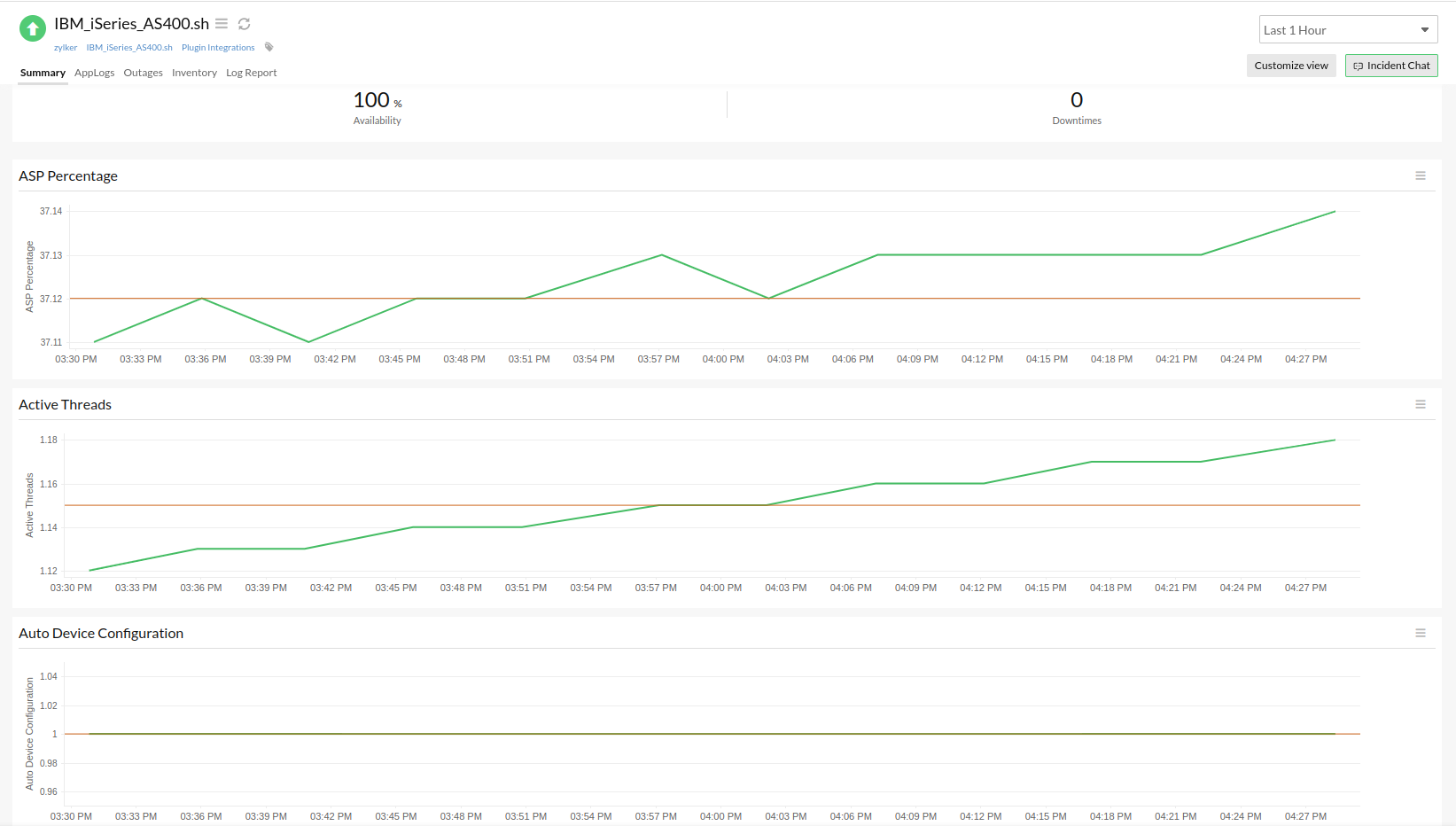Greetings!
We are happy to introduce a new plugin integration to monitor the performance of IBM AS400/iSeries servers.
IBM iSeries is one of the most reliable and secure servers used by multiple enterprises across industries worldwide. The IBM AS400 comes with hardware, software, security, a database, and other components built in. It is robust, adaptable, and can easily incorporate new technologies.
IBM AS400/iSeries is used by enterprises from industries such as banking, insurance, and manufacturing, where the uptime and performance of applications are business-critical. Site24x7's IBM AS400/iSeries plugin integration tracks server availability and performance, helping you to identify and fix issues before they affect end users.
With the IBM AS400/iSeries monitoring plugin, you can:
- Keep an eye on pool metrics like auxiliary storage pool (ASP) percentage, total ASP, and CPU percentage to make informed decisions on server capacity and performance, and avoid crashes.
- Get insights about jobs running in your system, including total jobs, number of active jobs, number of batch jobs, and active threads. Identify long-running jobs or too many jobs in job queues, and take action to improve server performance.
- Track batch jobs and job queue metrics, such as batch jobs held in a job queue, batch jobs held while running, or jobs in an unassigned job queue.
- View system metadata like system name, model, serial number, and version.
- Monitor message queues and track the increased number of jobs in queues so you can delete jobs as needed and optimize performance.
 IBM AS400/iSeries plugin metrics
IBM AS400/iSeries plugin metricsSee the list of metrics the plugin tracks and install the plugin to stay on top of your IBM AS400/iSeries server performance.
We encourage you to check out our growing list of more than 100 plugin integrations to monitor your entire application stack.
You can also build your own plugin to monitor any custom application, system, or service in your server.
Watch the video below to learn how to add a custom plugin for Linux servers.
Watch the video below to learn how to add a custom plugin for Linux servers.
Until next time,
Happy monitoring.
Like (1)
Reply
Replies (0)